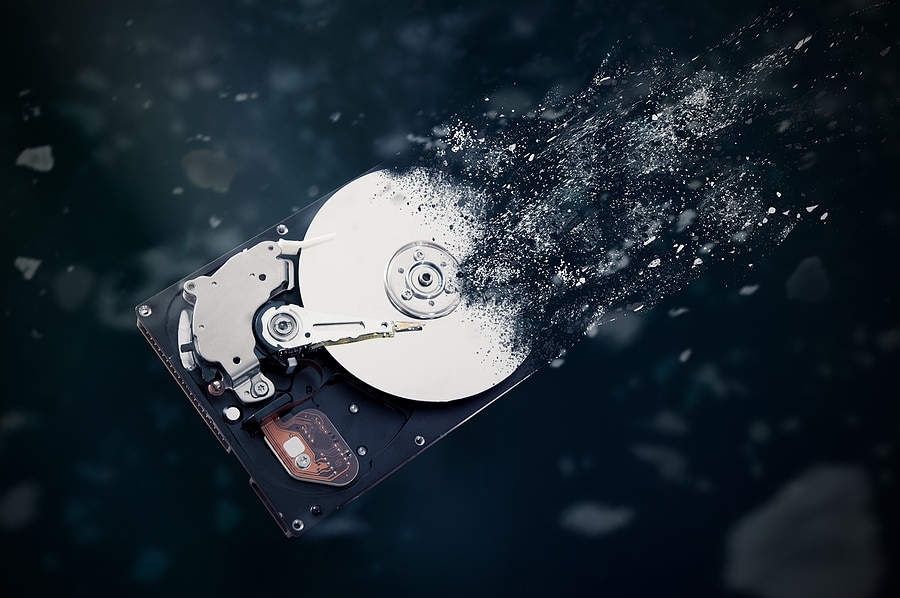5 Tips to Help Your Business Create an Effective Data Destruction Policy

5 Tips to Help Your Business Create an Effective Data Destruction Policy
It’s safe to say every modern business owner is aware of how serious the handling of secure data is. As the backbone of most businesses, data provides invaluable customer insights that allow analysts to improve the business on a number of levels.
Recovering data that was ‘deleted’ from hard drives is a common technique cybercriminals use to steal companies’ data. The Blancco Technology Group conducted a study that included collecting hard drives from online sites to find out whether residual data was left behind unknowingly.
The result was that 36% of the 200 hard drives held considerable amounts of data that the owners did not properly delete. For advanced data recovery software or someone who knows how to piece together the data, simply deleting files makes data breaches a piece of cake.
To avoid the disastrous consequences of a data breach, establish an effective data destruction policy for your business.
1. Get Your Employees to Understand the Severity
Before you can begin to craft a foolproof data destruction policy, you must make sure the whole team is on board. If some of your employees are lax in handling or destroying data, no strategies put in place can thwart a data breach.
Rules are only effective when people believe in and abide by them. By drilling the importance of data security into your employees’ minds, you make them aware of the consequences of neglecting policies and procedures.
2. Gather Your Data
In order to protect your data, you need to know where it is. A full accounting of all of your company’s data and devices makes it easier to develop policies that will make certain nothing slips through the cracks. Here are some suggestions as to what you should be cataloging in your inventory:
- Laptop and desktop computers
- Mobile devices/phones
- Printer and fax machine hard drives
- Company USB or flash drives
- Hard drives of equipment
- Forms or papers that include sensitive data
As you can see, data is hiding all over the place.
3. Determine the “Five Ws”
To keep on top of your data, you need to know:
- Who is destroying what data? Who is responsible for verifying the destruction?
- What is the device being destroyed? What is the sensitivity level?
- When is the destruction taking place? Is it periodically or once a year?
- Where is the data held? Where is it being destroyed?
- Why did you come to these decisions? Are they the best long-term decisions?
To go even more in-depth, ask yourself how: How is each device being destroyed? How is the data being properly disposed of?
4. Address Compliance Needs
Different industries require different levels of data privacy. For heavily regulated industries like healthcare, finance, and education, many data privacy regulations come into play. For other industries that are not as regulated, it is still important to protect your customers’ privacy and safeguard your internal data.
Make sure you are up to date on what’s required for compliance in your industry, as well as at the local, state, and federal level.
5. Draft Your Policy
By writing everything out, you can begin the review and revision process for your data destruction policy. Include who is responsible for adding to and reviewing your IT asset inventory, who is responsible for upgrading, replacing and removing devices when they come to their end of life, with instructions on where to store devices and what approved vendors are in place for data destruction and proper recycling or resale services.
Like any living document, your first draft won’t be the finished product. Still, you can take the skeleton of your first draft and flesh it out more as you determine the best practices for your business. If your policy isn’t up to compliance standards or includes something that can potentially go awry, you may want to seek legal counsel to advise you on your policy. The expenses paid to an attorney are insignificant compared to the cost of a data breach or compliance penalty.
SEAM Services
SEAM Services caters to North Dakota and South Dakota businesses that need electronics recycling and data destruction. We’ll help you implement your data destruction policy with certified and secure hard drive shredding, serial number reports, certificates of destruction and recycling, and other itemized reporting to meet your policy needs. Contact us today to ensure your data is properly destroyed.
SEAM provides IT recycling and data destruction services including onsite shredding and hard drive wiping to South Dakota, North Dakota, Minnesota, Iowa, and Nebraska.
Schedule a pickup or contact us for more information.





